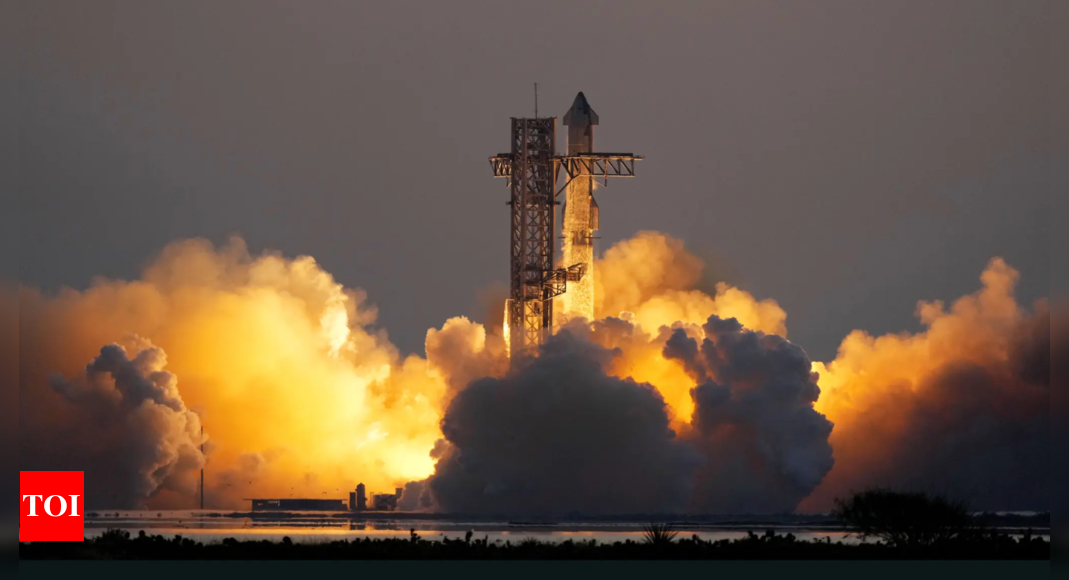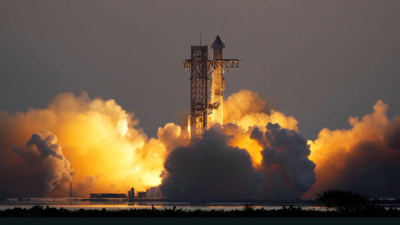

SpaceX achieved a significant milestone by successfully launching its colossal Starship rocket and catching the returning booster using mechanical arms at the launch pad on Sunday. The empty Starship, standing nearly 400 feet (121 meters) tall, lifted off at sunrise from the southern tip of Texas, near the Mexican border. Like its four predecessors, the rocket arced over the Gulf of Mexico, but unlike them, it did not end up being destroyed during liftoff or while attempting to land in the sea.
This time, Elon Musk, the founder and CEO of SpaceX, raised the stakes by attempting to bring the first-stage booster back to the launch pad from which it had taken off just seven minutes earlier.The launch tower is equipped with massive metal arms, nicknamed “chopsticks,” designed to catch the descending 232-foot (71-meter) booster. As the booster slowly lowered itself into the arms of the launch tower, company employees erupted in cheers.
“The tower has caught the rocket!!” Musk announced via X.
The flight director had the responsibility of deciding, in real-time and with manual control, whether to attempt the landing. SpaceX said that both the booster and launch tower needed to be in good and stable condition for the catch to be attempted. If not, the booster would have ended up in the gulf like its predecessors.
Fortunately, everything was deemed ready for the catch. The stainless steel spacecraft on top, with its retro appearance, continued its journey around the world once separated from the booster, aiming for a controlled splashdown in the Indian Ocean, where it would sink to the bottom. The entire flight was expected to last just over an hour.
SpaceX has been successfully recovering the first-stage boosters of its smaller Falcon 9 rockets for nine years, after delivering satellites and crews to orbit from Florida and California. But these boosters typically land on floating ocean platforms or concrete slabs several miles away from their launch pads, not directly on them.
By recycling Falcon boosters, SpaceX has accelerated its launch rate and saved millions of dollars. Musk intends to apply the same approach to Starship, the most powerful rocket ever built, featuring 33 methane-fuel engines on the booster alone.
Nasa has already ordered two Starships to land astronauts on the moon later this decade, and SpaceX plans to use Starship to send people and supplies to the moon and, eventually, Mars.








